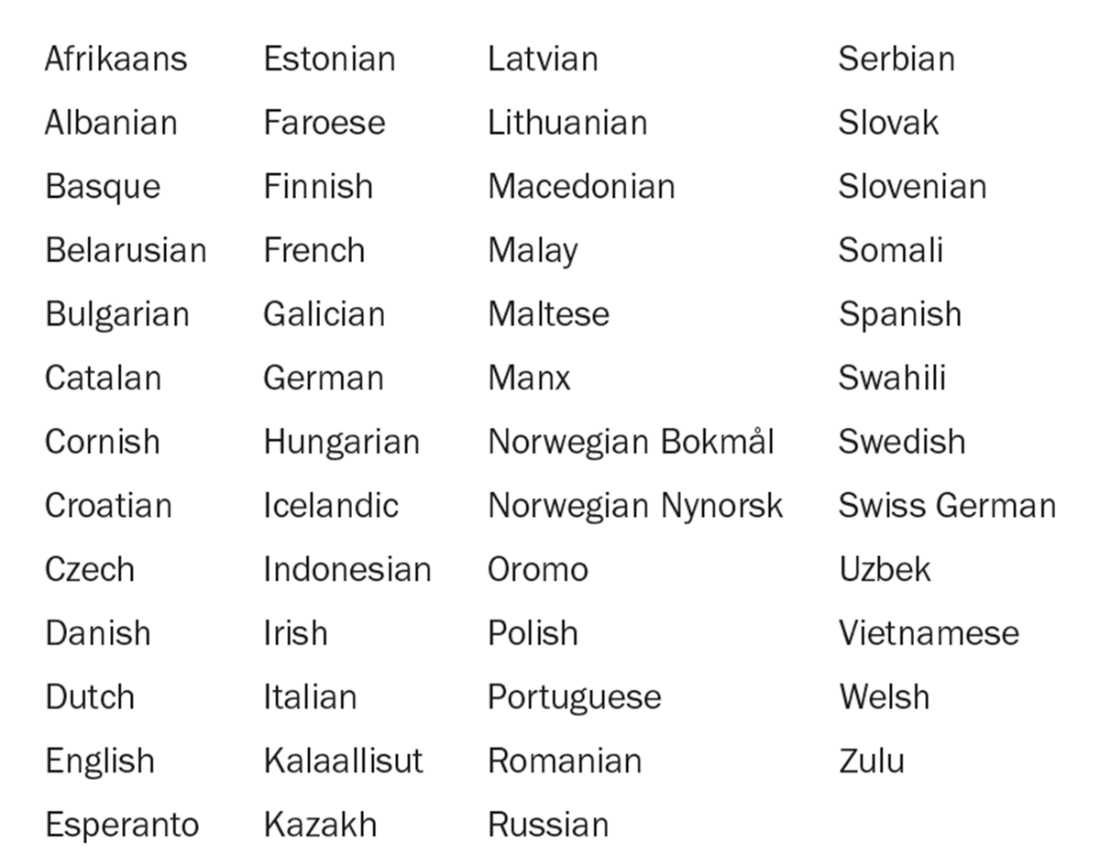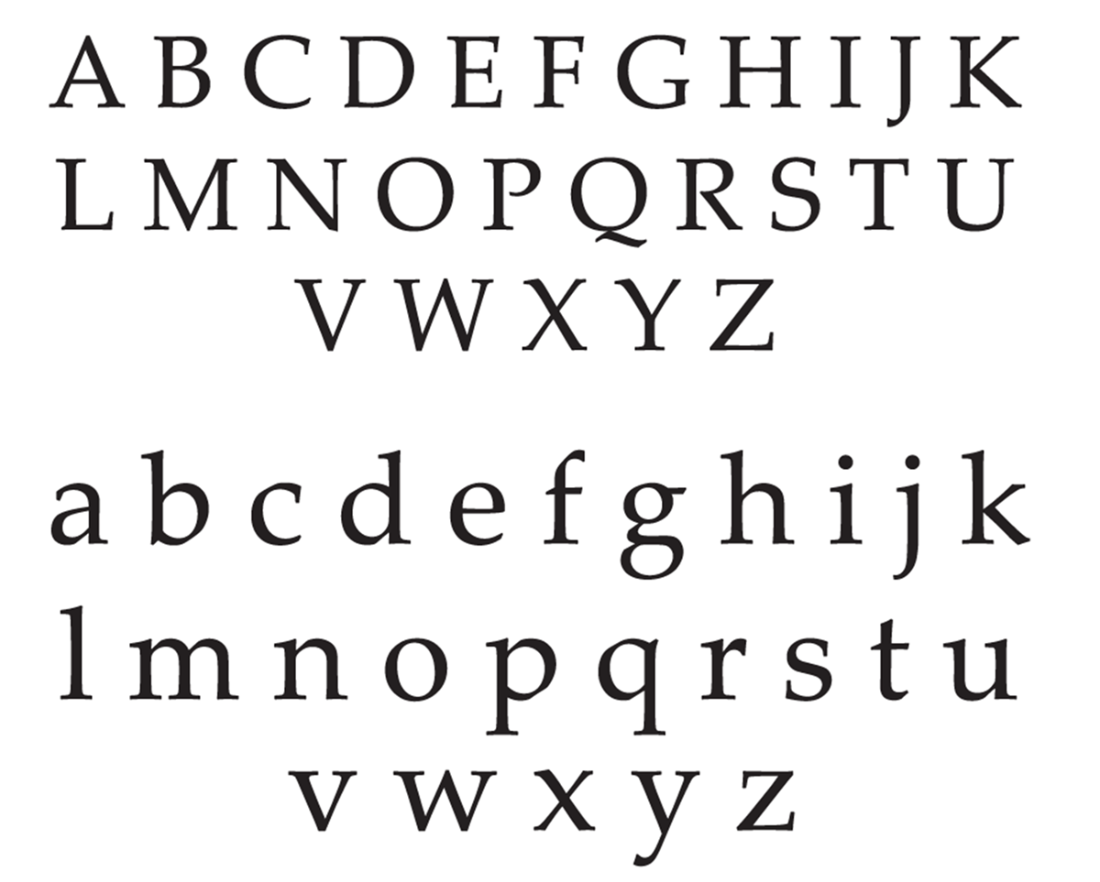9 A typeface
This chapter covers
- The kinds of characters in a typeface
- Writing in the world’s languages
- Placing letters on a page next to each other to make words
A page’s content is made up of tiny little filled shapes, one for each letter, number, or piece of punctuation. The shapes are taken from what is known as a typeface or font. In this chapter, we will choose for an example the typeface Palatino, designed in 1950 by the legendary German typographer Hermann Zapf (1918–2015). The definitive modern version of Palatino from Linotype of Germany contains some 1,328 glyphs (shapes for characters) for each typeface in the family (Roman [normal], Italic, Bold, and Bold Italic), a total of 5,312 shapes for the typeface designer to draw. You can see why commissioning a new typeface is expensive and so why buying high-quality typefaces for your own use can be expensive, too.
9.1 Introducing Palatino
Owing to its wealth of characters, Palatino Linotype supports many Western languages by providing appropriate accents and alternative glyphs in a single typeface, as shown in figure 9.1.
Figure 9.1 Languages supported in Palatino

In addition, it contains the Cyrillic characters as well as those used in Modern Greek as well as the so-called Latin ones we use in English. Figure 9.2 shows the capital letters and lowercase letters used in English.
Figure 9.2 Capital and lowercase letters in Palatino
